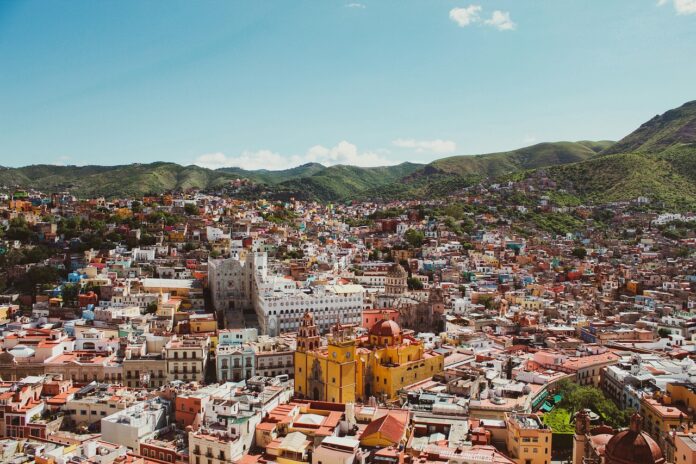27 Interesting Facts about Mexico
- Location and Borders: Mexico is located in the southern part of North America. It is bordered by the United States to the north, Belize and Guatemala to the southeast, and has a coastline along both the Pacific Ocean to the southwest and the Gulf of Mexico to the east.
- Square: The country covers an area of approximately 1.96 million square kilometers.
- National Currency: The currency of Mexico is the Mexican Peso (MXN).
Interesting Facts about Mexico:
- Communication Links: Thirteen percent of international calls from the U.S. are made to Mexico, while ninety percent of international calls from Mexico are directed to the United States.
- Street Fruits: Fruits sold on the streets are peeled, cut into pieces, and packaged in plastic bags. Vendors often recommend sprinkling them with chili powder.
- Historical Encounter: When Spanish conquistador Hernán Cortés arrived on Mexico’s coast, he was mistaken for a deity and was offered a sacred cocoa drink.
- Sombrero Symbolism: The traditional Mexican hat, the sombrero, is no longer commonly worn by locals but remains a popular souvenir for tourists.
- Ancient City: Mexico City is the oldest city in North America, built atop the ruins of the Aztec city of Tenochtitlan.
- Culinary Heritage: Mexican cuisine is listed as a UNESCO World Heritage due to its ancient recipes and rich culinary traditions.
- Blue Agave: Tequila is made from the blue agave plant, not cacti as often believed.
- Diverse Ecosystems: Mexico’s geography supports a variety of ecosystems, including mountains, deep seas, deserts, coral reefs, and mangroves.
- Drug Cartels: Armed conflicts between rival drug cartels, government forces, and police have increased, with recent rises in kidnappings for ransom.
- Chihuahua Breed: The Chihuahua dog breed is named after the state of Chihuahua, where it was first discovered in the mid-19th century.
- Bullfighting Tradition: Bullfighting was introduced to Mexico by Spanish conquerors and has become a traditional national spectacle.
- Taxi Safety: In Mexico City, taxis vary in safety levels: the safer ones are more expensive, but all remain relatively affordable.
- Day of the Dead: In early November, Mexico celebrates the Day of the Dead with family altars decorated with sugar skulls, marigolds, and the favorite foods and drinks of the deceased.
- Mythological Snakes: Mexican mythology features numerous serpent depictions, including the feathered serpent god and the pyramid built for Kukulkan.
- Mixed Heritage: Most modern Mexicans are descendants of mixed European and Indigenous ancestry. They primarily speak Spanish and are predominantly Catholic.
- Underwater Sculpture Museum: Cancun’s coastal waters host a unique underwater sculpture museum created by British artist Jason deCaires Taylor.
- Color TV Pioneer: Guillermo González Camarena, a Mexican inventor, patented color television in 1940 at the age of 23.
- Popular University: The National Autonomous University of Mexico (UNAM) is considered the most attended university in both North and South America.
- Mayan Ruins: Mexico is home to some of the most impressive Mayan ruins, including Chichen Itza and Tulum. The former features the iconic El Castillo pyramid, which aligns with the sun during the equinox.
- Largest Pyramid: The Great Pyramid of Cholula, located in Mexico, is the largest pyramid in terms of volume, even larger than the Great Pyramid of Giza.
- World’s Largest Silver Producer: Mexico is one of the world’s leading producers of silver, contributing significantly to the global supply.
- Rich Biodiversity: Mexico ranks as one of the world’s most biodiverse countries, with a variety of species across its numerous ecosystems, including jaguars, monarch butterflies, and countless bird species.
- Mexican Festivals: Mexico is known for its colorful and vibrant festivals, including the Guelaguetza in Oaxaca and the Carnival of Veracruz, which showcase traditional music, dance, and costumes.
- Chocolate Origin: The word “chocolate” comes from the Nahuatl word “xocolatl,” used by the Aztecs to describe their bitter chocolate drink.
- Historic Calendar: The ancient Maya developed one of the most accurate calendar systems in history, which tracked time with remarkable precision.
- World’s Oldest Brewery: The oldest brewery in the Americas, Grupo Modelo, was established in Mexico City in 1925 and is known for producing iconic beers like Corona.
- Volcanoes: Mexico is home to several active volcanoes, including Popocatépetl and Colima, which are important features of the country’s landscape and culture.
